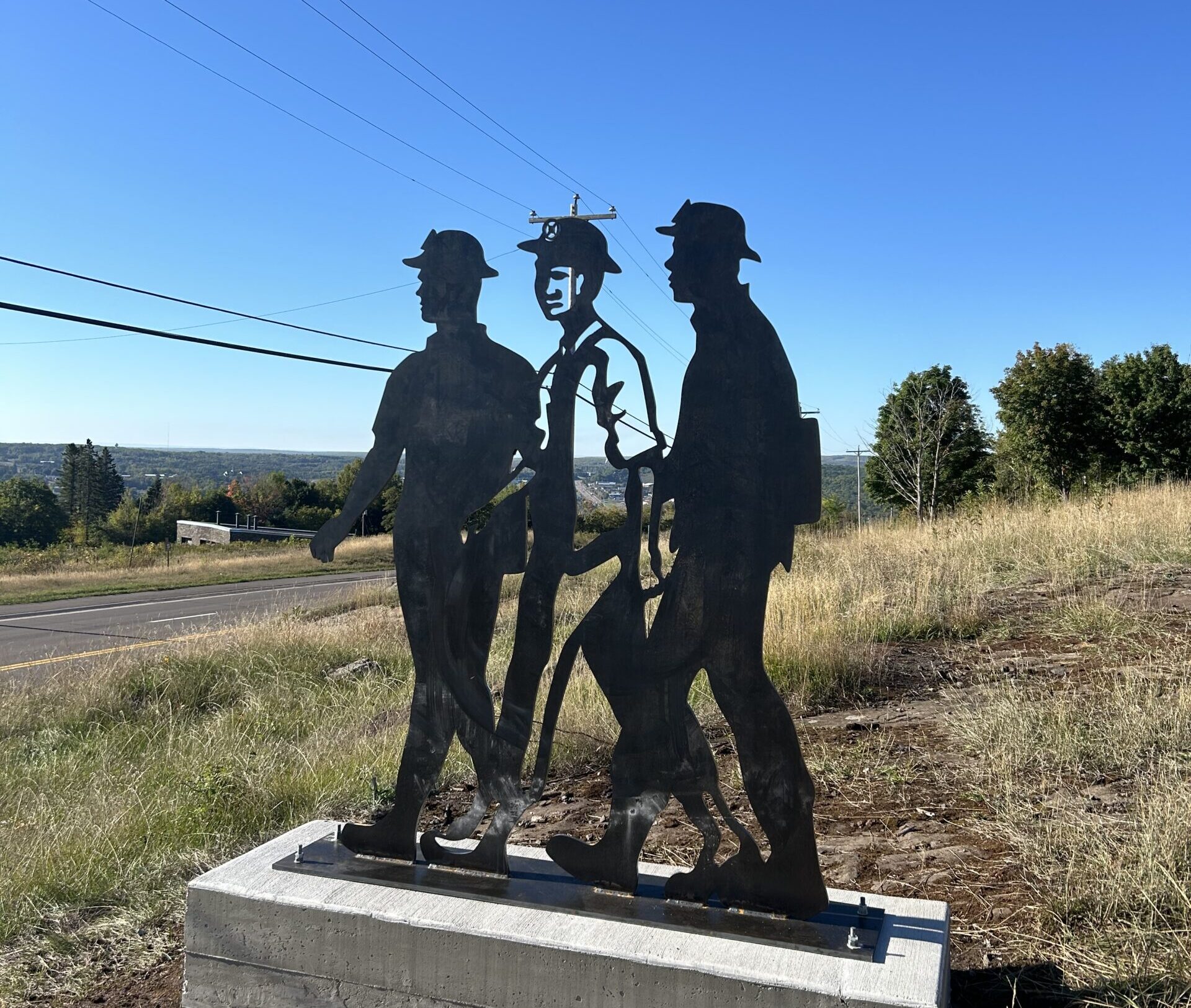UP-born artist Kasey Koski recently unveiled several historic statues to “repopulate” ruins of the Quincy Mine Dry House. With just four days to come up with her proposal to meet the February deadline, Koski worked with Keweenaw National Historical Park and the Isle Royale and Keweenaw Parks Association to bring four steel silhouettes to the Quincy Dry House ruins, which are currently open to the public.
The installation represents the once-booming human population that excavated over 10 billion pounds of copper from the Keweenaw over the course of 128 years. Since then, the copper mining industry has mostly migrated to the western United States, leaving mining in the Keweenaw a shadow of the economic giant it once was.
The director of the Isle Royale and Keweenaw Parks Association described Koski’s sculptures as “[giving] the ruins a human touch” and bringing life back to the area. Koski emphasized the importance of not only preserving the industrial history of Quincy, but also the workers’ lives.
In the first installation, visitors will encounter displays of a mother holding her child, facing the second Quincy mineshaft. Koski wanted the other side of the highway to be shown, where people existed outside of mine work.
During preliminary research, Koski read the story of three brothers who had immigrated to the US and joined the Quincy Mine. Two of the three passed away and the fate of the third is unknown. The story inspired the second statue visitors will see, which features three workers walking a real “desire path” that actual miners had carved into the landscape walking to the dry house. Two of the miners are silhouettes, while the third is fully detailed.
The third installation shows a miner waving his hand to his friends or family after a long shift in the mine. He is wearing a historically accurate helmet, with a lunch pail at his side. Koski emphasized wanting each statue to be as historically accurate as possible. “There’s no eyelashes,” Koski explained, due to the challenge of depicting intricate details in steel statues.
The fourth installation displays the cleaning process of the dry house. Koski only had two historical photos of the dry house from the Michigan Tech archives to work with, and was limited to those photos while creating the last piece. The statue depicts a man washing himself and his clothes in a pail, bent over and exhausted. After cleaning up at the end of a shift in the dry house, miners would return home to their families.


